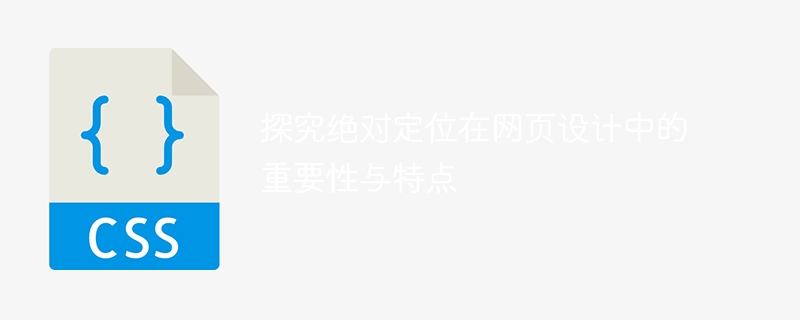

The importance and characteristics of absolute positioning in web design
In modern web design, absolute positioning is an important layout technology that can accurately control elements position on the page. Compared with relative positioning and fixed positioning, absolute positioning has unique characteristics and advantages. This article will explore the importance of absolute positioning in web design and deepen understanding through specific code examples.
1. The importance of absolute positioning
2. Characteristics of absolute positioning
Specific code example:
<!DOCTYPE html>
<html>
<head>
<style>
.container {
position: relative;
width: 500px;
height: 300px;
background-color: #f2f2f2;
}
.box1 {
position: absolute;
left: 50px;
top: 50px;
width: 150px;
height: 50px;
background-color: #ff0000;
}
.box2 {
position: absolute;
right: 50px;
top: 100px;
width: 100px;
height: 100px;
background-color: #00ff00;
}
.box3 {
position: absolute;
left: 200px;
top: 200px;
width: 200px;
height: 150px;
background-color: #0000ff;
}
</style>
</head>
<body>
<div class="container">
<div class="box1"></div>
<div class="box2"></div>
<div class="box3"></div>
</div>
</body>
</html>In the above code example, we created a container element (container) and three absolutely positioned box elements (box1, box2, box3) . By setting the left and top properties of box1, it is positioned in the upper left corner relative to the container. Likewise, position box2 in the upper right corner relative to the container by setting its right and top properties. Box3 is positioned at the specified left and top positions relative to the container.
Through this simple code example, we can see that absolute positioning can accurately control the position of elements on the page, thereby achieving free and flexible web page layout. At the same time, by adjusting the stacking order between different elements, more complex effects can be achieved, enhancing the visual appeal and interactivity of the web page.
To sum up, absolute positioning is important and unique in web design. It can improve user experience, enhance page interaction, and enable designers to better control element positions and create personalized layouts. In practical applications, absolute positioning needs to be reasonably used according to specific circumstances to achieve the best design effect.
The above is the detailed content of In-depth discussion of the importance and characteristics of absolute positioning in web design. For more information, please follow other related articles on the PHP Chinese website!




